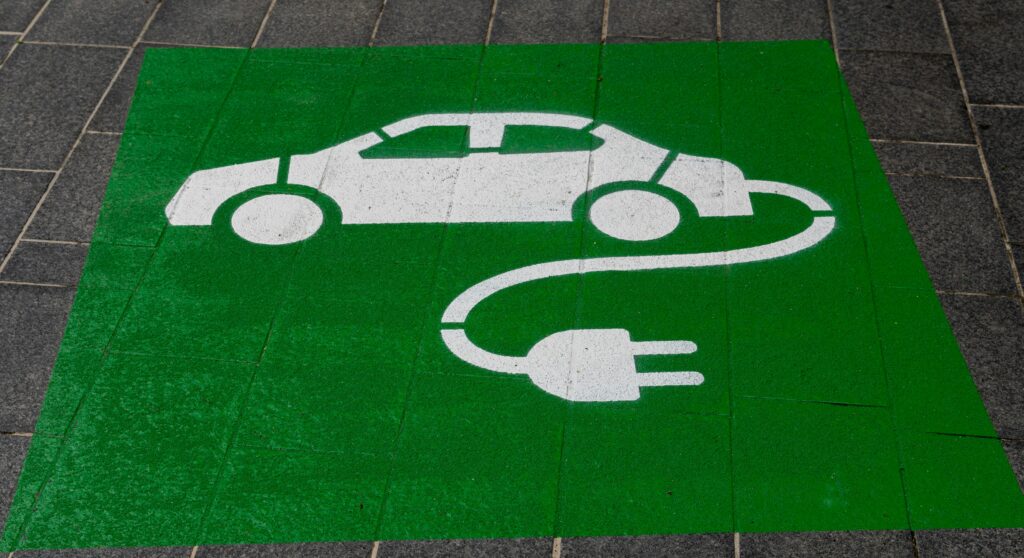
By Aleksandr Kotusov
At a time when climate change and urban congestion pose significant challenges to our societies, the quest for sustainable mobility has never been more urgent. This article, inspired by my involvement with IYNF and its upcoming training course on sustainable youth mobility, explores some of the practical strategies for achieving sustainable transport solutions in Europe. Drawing on my academic background as a medical researcher and my personal commitment to environmental advocacy as an e-volunteer of IYNF, I aim to shed light on the principles that can give us access to sustainable mobility and highlight the critical importance of fostering a culture of sustainable mobility among people to preserve our health and nature. By sharing these insights, I hope to contribute to a broader conversation about how we and our governments can work together to shape a greener future.
Sustainable mobility avoids the negative environmental and health impacts of transport, while providing safe and equitable access to essential places, goods and services for citizens.
European countries are actively developing sustainable mobility. For example, in 2020, as part of the EU Green Deal, the European Commission developed a strategy for sustainable and intelligent mobility to reduce greenhouse gas emissions from transport by 90% by 2050. However, the issue of decarbonising the transport sector is still pressing. The transport sector’s emissions are still growing in the EU and currently account for about 17% of total emissions. In this article, I intend to present the main principles by which European countries can achieve sustainable mobility, as well as examples of what has already been done in European countries.
The first principle is to improve the quality and availability of public transport.

This goal will encourage residents to use public transportation instead of private means, when possible. To achieve this, it is necessary to strive to reduce public transport fares. A recent Greenpeace report on public transport in Europe says that lowering fares is one of the ‘easiest and quickest ways’ to encourage people to use buses and trams. In order to accomplish this goal, the fare must be lower than the cost of running a car. An example of good practice is that of Luxembourg, where in 2020, fees for using public transport were abolished. The country’s former deputy prime minister, François Bausch, explained this as a desire to give everyone fair access, stimulate debate and raise awareness of changes to the country’s transport system that are planned for the next decade. In addition, Luxembourg has increased the quality of public transport – trams have exclusive right of way and priority at junctions, so they never get stuck in traffic jams. Thanks to this reform, more and more people have started using this form of public transport, thus reducing the amount of carbon dioxide emitted into the atmosphere.
Of course, not every country can afford to abolish fares for public transport. The key is to make buses and trams cheap and easy to use. Other sources of transport funding may include transferring funds from fossil fuel subsidies or raising taxes on airline tickets. Incidentally, even in Luxembourg, transport is not free in the strict sense of the word – it is paid for through taxation. So every country in Europe has the opportunity to make an effort in this direction.
The second principle is to improve the conditions of bicycle mobility.

Bicycles can be a comfortable and environmentally friendly alternative to cars. The development of cycling infrastructure not only helps to improve urban air quality and reduce greenhouse gas emissions, but also helps to reduce noise pollution.
Active cycling is not new to Europeans – for example, around 50 per cent of students and workers in Copenhagen commute to school or work by bike. However, greenhouse gas emissions from diesel and petrol cars in the EU are still high, so European countries continue to actively encourage their citizens to use alternative means of transport – especially bicycles. To mention just one positive initiative, in 2021 Austria launched a pan-European plan to promote cycling. By 2030, signatory countries are expected to develop national cycling policies and plans, increase safety and halve the number of cyclist injuries and fatalities, and integrate cycling into urban planning and national health plans. The measures in the plan promise to reduce greenhouse gas emissions by 8 million tonnes. This example confirms that the development of cycling on public roads may be an effective and actively implemented way to achieve sustainable mobility in Europe.
The third principle is to create an infrastructure for the convenient use of electric vehicles.

Unlike petrol and diesel cars, electric vehicles do not rely on the combustion of petroleum products to run the engine. Although the production of electric vehicles and their batteries does involve greenhouse gas emissions, these are less than those produced by burning fuel to run an internal combustion engine. This makes electric vehicles a worthwhile, though not ideal, alternative to petrol cars. Therefore, this type of vehicle becomes a worthy environmental alternative. After all, not every journey can be made by bicycle.
European countries are actively developing electric mobility. Germany, for example, plans to become a leading market for electric mobility by building a nationwide network of charging stations and developing environmentally friendly batteries. By 2030, at least 15 million electric cars are expected to be on German roads. The willingness of Germans to switch to electric cars is high: according to a study by the state development bank KfW, almost half of all households in Germany do not rule out owning an electric car in the next ten years. Interest in electric cars is also growing in Italy. 44% of Italians are considering buying an electric car (+15% compared to the European average). The main reasons include the possibility of saving money on fuel, environmental reasons (both 40%) and the fact that cars with internal combustion engines will become increasingly rare in the future (34%). Across the EU as a whole, a 14% increase in sales of electric vehicles was recorded in 2023, a positive trend for the environment. However, to increase the popularity of this mode of transport, it is necessary to increase the number of available charging points by integrating them into the infrastructure of settlements.
The fourth principle is to raise public awareness of the importance of achieving sustainable mobility and the principles for achieving it.

Infrastructure development is important, but we should not forget to explain to the population why it is important to follow the previous principles: what are the benefits of using a bicycle or public transport instead of a car? Europeans should be able to get a detailed and qualitative answer to this question.
One of the biggest events dedicated to promoting sustainable mobility is the European Mobility Week, an annual initiative of the European Commission held in European cities and towns since 2002. The initiative includes traffic-related activities such as critical masses of cyclists, temporarily closing streets to cars and opening them to pedestrians and cyclists. Local authorities are encouraged to use the main week to trial innovative planning measures, promote new infrastructure and technology, measure air quality and seek feedback from the public. The campaign aims to raise awareness of sustainable urban mobility.
It is therefore possible to achieve a more sustainable mobility in Europe, and countries are already striving to meet the above principles. It is very important that European states continue to develop programmes to achieve this at government level and do not stop there. Achieving sustainable mobility also depends on each and every one of us – we should all develop healthy habits to keep the environment in a favourable state.
References
1. Gallo, M.; Marinelli, M. Sustainable Mobility: A Review of Possible Actions and Policies. Sustainability 2020, 12, 7499. Avaliable at: https://doi.org/10.3390/su12187499
2. European Commission. Transport. Available at: https://transport.ec.europa.eu/index_en
3. Euronews. (2023). Green Week 2023 in Luxembourg: Public Transport. [Online] Available at: https://ru.euronews.com/green/2023/06/06/green-week-2023-luxembourg-public-transport
4. UN News. (2021). [Online] Available at: https://news.un.org/ru/story/2021/05/1403132
5. Euronews. (2024). EU Car Emission Standards Report. [Online] Available at: https://ru.euronews.com/my-europe/2024/01/24/eu-car-emission-standards-report
6. DW. (2023). ACEA: Sales of Electric Vehicles in the EU Increased by 37 Percent in 2023. [Online] Available at: https://www.dw.com/ru/acea-prodazi-elektromobilej-v-es-vyrosli-na-37-procentov-v-2023-godu/a-68021513
7. First Online. Interest in Electric Cars Grows in Italy, but Concerns About Costs Remain. [Online] Available at: https://www.firstonline.info/en/mobilita-sostenibile-cresce-linteresse-per-le-auto-elettriche-in-italia-ma-restano-preoccupazioni-sui-costi/
8. United Nations Environment Programme (UNEP). Why Electric Mobility is Important. [Online] Available at: https://www.unep.org/ru/topics/transport/electric-mobility/pochemu-vazhna-mobilnost-na-baze-elektrichestva
